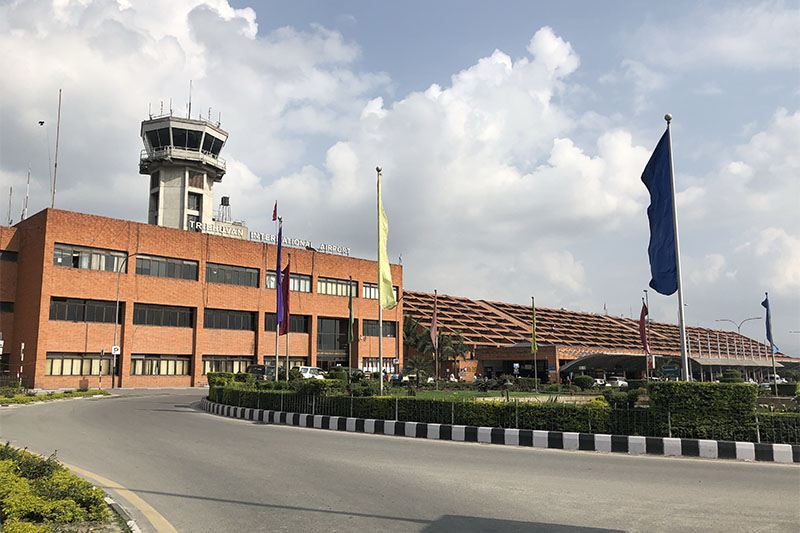Editorial: Run TIA effectively
TIA needs to manage its limited space effectively until GBIA comes into full operation within a couple of months
With just one-and-a-half months left for the Visit Nepal Year (VNY) 2020 to start, the management of the country’s sole international airport – Tribhuvan International Airport (TIA) – seems to be struggling to manage the operations of domestic and international flights on a daily basis. Immediately after late minister for culture, tourism and civil aviation Rabindra Adhikari announced that TIA would be operated round-the-clock, the only airstrip had to go for renovation, which continued for almost four months. It also hampered the operation of flights, forcing most of the international airlines to reschedule their timing.
Air traffic congestion is attributed to lack of enough space for parking aircraft and increasing number of flights. More than 400 flights are operated from the only airstrip at TIA on a daily basis. Most of the time domestic and international flights are forced to hold in the air, wasting precious time and burning more fuel, which bleeds the airlines financially. The problem related to space crunch is sure to increase during the VNY 2020 as more international airlines have shown keen interest in adding flights. As per the statistics, air passengers are growing at a whopping 8 per cent every year. However, TIA authorities do not have any plan of action to add more space for aircraft parking.
According to Doleshwar Koirala, ground support director of NAC at TIA, the airport has been operating beyond its capacity for long, and the problem will further aggravate when more airlines add flights targeting the visit Nepal year. There are 11 parking bays at TIA for international flights – three for wide-body aircraft and the rest for narrow-body aircraft – and 17 parking bays for domestic aircraft. But TIA has to adjust more than 30 planes at the same bays allotted for domestic airlines. Friday’s minor collusion of an aircraft belonging to Shree Airlines with a parked aircraft of Yeti Airlines was the result of congested parking. It speaks volumes about the space crunch for parking aircraft at TIA. TIA management has not utilised the two new remote parking bays to offload passengers either.
In order to make the VNY 2020 a success, TIA needs to manage its narrow parking space effectively so that two million tourists can visit Nepal via air. Currently around 1.1 million tourists visit Nepal via air annually. It means we need to increase aircraft and parking bays two-fold to accommodate the increased air passengers. The government needs to address the problem of space scarcity without delay. The remote parking bay should be brought into operation at the earliest. At the same time, we also need to encourage domestic airlines to operate their flights to Lukla and Tumlingtar from Ramechhap Airport by upgrading its existing facilities and the road leading there. It will help reduce traffic congestion at TIA to some extent. However, this is not a lasting solution to end the air congestion at TIA. The government should, therefore, complete the construction work of Gautam Buddha International Airport (GBIA) soon so that almost half of the international flights could be operated from there during the VNY. The government should put every effort to finish the remaining works at GBIA, which will help ease the perennial air traffic congestion at TIA.
Disruption threat
Disruption of projects by the locals is nothing new in Nepal, and this has often led to construction delays and cost overruns. Two hydropower projects, promoted by MV Dugar Group, on the Likhukhola that flows between Ramecchap and Solukhumbu districts in east Nepal, now face the wrath of the locals, who have threatened to disrupt the work of the projects from the second half of November should their demands be ignored. The demands include free electricity, priority to the locals in employment, upgradation of roads, support for education, health and drinking water, and 20 per cent share in both the projects for the locals.
If such demands are put forth time and again, they will certainly affect the completion of the projects, which will jointly generate a total of 125 MW of power. Were the demands part of the deal with the promoters or are the locals trying to take undue advantage now that the hydel projects are half way through their construction? The government must see to it that both the promoters of the projects and the locals stick to the deal in both letter and spirit, so that the projects are not halted midway.






